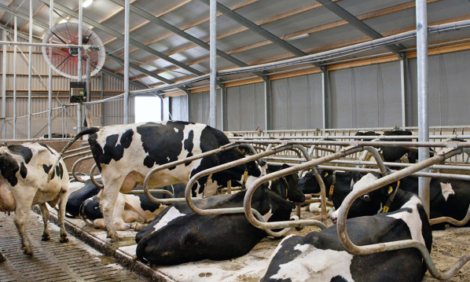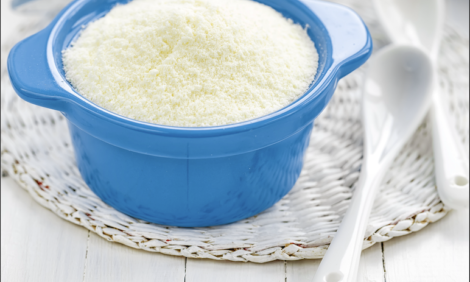



Strengthening biosecurity: Insights from Julia Herman, DVM, on foot-and-mouth disease preparedness
Enhanced FMD biosecurity planning for producers, transporters and veterinariansIn a recent webinar hosted by the National Cattlemen’s Beef Association (NCBA), Dr. Julia Herman, beef cattle specialist veterinarian at NCBA, provided insights on biosecurity planning, particularly regarding foot-and-mouth disease (FMD) preparedness.
With the livestock industry facing a growing risk of disease outbreaks, Dr. Herman underscored the necessity of proactive biosecurity measures to safeguard the health of cattle and ensure economic stability in the sector.
Understanding the threat of FMD
When asked how big of a risk is FMD to the US, Dr. Herman said, “I think it's huge… the traffic coming in and out of the country and that's not just ag traffic, that's tourism, that's business, that's vacationers. That traffic coming in and out of the US and then how big our livestock industry is, I think the threat is very big."
That’s why NCBA offers a toolkit of resources to producers and the value chain, so everyone can start thinking about the steps needed to protect the US herd on a daily basis. It starts with the BQA daily biosecurity plan and then can move up to an enhanced biosecurity plan in case a producer would have to quarantine for FMD.
Dr. Herman emphasized that FMD is “the most contagious viral disease of two-toed animals in the world.” Affecting cattle, pigs, sheep and goats, this disease has not been detected in the US since 1929, leaving the country’s livestock industry particularly vulnerable should an outbreak ever occur.
“Our entire livestock industry is naive,” she noted, “and so it's going to spread very quickly.”
FMD spreads through bodily fluids such as saliva, urine, milk, and even semen, often before clinical signs appear. Unlike other diseases that cause high mortality rates, FMD primarily results in severe sickness, leading to significant economic losses. This is why proactive measures are crucial.
Dr. Herman explained that “depopulation is a common control strategy,” referencing past outbreaks such as the UK’s FMD crisis in 2001, which resulted in the culling of over six million animals and costing the UK cattle industry billions in losses.
The importance of enhanced biosecurity measures
Biosecurity planning is essential for mitigating risks associated with FMD and other livestock diseases.
“When enhanced biosecurity is needed, we really need to be prepared ahead of time,” Dr. Herman stated. Implementing preventive measures before an outbreak occurs can significantly reduce the impact of a disease incursion.
Dr. Herman outlined several key biosecurity strategies:
- Animal quarantine and testing: New animals should be tested and quarantined before entering a farm to prevent the introduction of infectious diseases.
- Pest control: Wildlife, rodents, and birds can contribute to disease spread, making an integrated pest management plan vital.
- Strict sanitation protocols: Cleaning and disinfecting equipment, vehicles, and clothing can reduce pathogen transmission.
- Personnel awareness: Employees, veterinarians, feed representatives, and visitors should adhere to strict biosecurity measures, including footwear sanitation and restricted access to sensitive areas.
She also pointed out that “big journeys begin with small steps,” encouraging producers to gradually implement these biosecurity measures rather than feeling overwhelmed by the complexity of an enhanced plan.
Economic and health benefits of biosecurity planning
Biosecurity isn’t just about disease prevention—it also has significant economic benefits.
“Better animal health also equals better economic benefits,” Dr. Herman said.
Healthy cattle mean higher productivity, reduced treatment costs, and increased profitability for producers. Implementing measures such as improved nutrition can bolster immune systems, decreasing the likelihood of severe disease outbreaks.
Furthermore, maintaining a biosecure environment minimizes disruptions to the supply chain. Dr. Herman referenced the Secure Beef Supply (SBS) plan, which provides guidance on how to move cattle safely while preventing disease spread.
“The SBS plan provides that guidance for moving cattle but also to minimize that lost income across sectors of the beef industry during an outbreak,” she noted.
Preparedness through education and industry collaboration
One of NCBA’s primary initiatives is increasing awareness and preparedness among cattle producers, veterinarians, and transporters. Dr. Herman detailed how their team has developed a range of resources, including educational materials, posters for auction markets, training videos, and a premises identification guide.
“This is an overview of the project and resources that have been developed already. It is available on NCBA.org under the Producers tab,” she said.
Additionally, NCBA is working with experts nationwide to identify gaps in current biosecurity resources.
“We invited a number of experts from across the country to look at the resources available and conduct a gap analysis on what is missing,” Dr. Herman stated.
This collaboration ensures that the industry remains proactive in preventing and managing disease outbreaks.
If an outbreak, expect a national movement standstill
Dr. Herman also discussed the response protocols that would be implemented in the event of an FMD outbreak. A national movement standstill of at least 72 hours would be mandated to assess the situation and contain the spread of the virus.
“If foot and mouth disease gets to the US, there will be a national standstill of at least 72 hours that will be nationally mandated,” she explained. This period would allow authorities to identify infected and exposed animals and implement control measures swiftly.
A crucial component of outbreak response is the premises identification process, which enables authorities to track and manage livestock movements efficiently.
“This premises identification document goes through what is a premises, why is a premises identification needed, and how do you go and get this identification number,” Dr. Herman said.
Biosecurity for transporters and haulers
Transporters and haulers play a vital role in the livestock industry, yet they often lack specific biosecurity resources. Recognizing this gap, NCBA has developed contingency planning guides and enhanced biosecurity steps tailored for haulers.
“We have a contingency planning [document] and enhanced biosecurity steps for haulers and transporters,” Dr. Herman stated, highlighting the importance of ensuring that all sectors of the industry are prepared for a potential outbreak.
Future biosecurity initiatives
NCBA continues to expand its biosecurity initiatives, with upcoming webinars focusing on different aspects of the cattle industry, including transporters, backgrounders, and biosecurity managers.
“This is the first of four webinars that are focused on biosecurity,” Dr. Herman shared. “So we're going to have webinars focused on stocker/backgrounder, transporters and haulers, and biosecurity manager roles coming up.”
Additionally, NCBA has been involved in training programs and video projects to educate producers on best practices.
“We’ve done some train-the-trainer events this year at different veterinary and BQA state coordinator meetings,” Dr. Herman said, reinforcing the industry’s commitment to biosecurity awareness.
Need for vigilance and proactive planning
As global trade and livestock movements continue to increase, so does the risk of disease outbreaks. Dr. Herman stressed the importance of voluntary preparedness, stating, “The best way we can prepare for foot and mouth disease is to prepare now voluntarily.”
She encouraged cattle producers to leverage available resources and integrate biosecurity planning into their daily operations.
With NCBA’s ongoing efforts and industry-wide collaboration, the cattle sector can enhance its resilience against infectious diseases.



